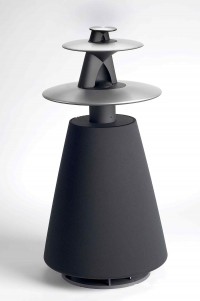Beethoven Digital Symphonies Series – Concert 1
Mr. Smith takes the digital orchestra out of the studio and into the concert hall to perform Beethoven’s Complete Symphonies. Performing these cornerstones of the symphonic repertoire in concert lets the audience judge whether a digital orchestra can be as expressive and moving as a traditional acoustic orchestra.
“There is no question that the music I’m playing is a masterpiece. It’s by Beethoven, after all,” Smith says. “So, what’s left to the audience to decide is whether my performance is any good. If our first concert is any indication of what’s to come, people are going to be stunned.”
Technology is Not Enough – Musicianship is Key

Smith's modded Wiimote
Smith has taken the Nintendo Wii far beyond off-the-shelf video gaming. By integrating game controllers into a computerized system with over three million orchestral sounds at the ready, he has created his own musical instrument – the Fauxharmonic Orchestra – with the flexibility and power to play nearly any orchestral music expressively and with the real-time responsiveness to acoustics and timing that great music demands.
But Smith is neither an inventor nor a programmer specializing in video games or broadband applications. He simply uses store-bought components, coupled with extensive musical training to produce a digital orchestra instrument many recognize as amazing. “Could just anyone do this? I don’t think so. Look, anyone can walk into a store and buy a Steinway piano, but that doesn’t mean they’re going to play like Horowitz. Musical ability is more important than technical ability,” explains Smith.
Even so, the quality of the tools is important. That’s why Smith is using Bang & Olufsen’s acclaimed BeoLab 5 speaker system and the best orchestral sample library (collection of orchestral sounds) ever created, the Vienna Symphonic Library.
“Wii controllers are cheap toys to the rest of the world, but to me they are the highly reliable, mass produced ‘bow’ for my string sections. And the fact that they cost so little is just a nice bonus,” says Smith.

Coolest invention of 2003 - Time
“The really important technology for this concert is the loudspeakers. The system that converts the digital information into sound in a real acoustic space has to be able to handle the demands of the music. It has to be as good a musical instrument as the acoustic instruments whose sounds I’ll be playing. That’s why I’m thrilled to be using Bang & Olufsen’s BeoLab 5 speakers. You don’t hear the speakers when you listen to these, you just hear the music.”
Bang & Olufsen, one of the world’s leading manufacturers of high-end audio and video equipment, has generously agreed to supply Paul Henry Smith and the Fauxharmonic Orchestra with their BeoLab 5 loudspeaker system. Picked by Time Magazine as one of 2003’s coolest inventions, the BeoLab 5 system will be the “instruments” of the Fauxharmonic Orchestra. The BeoLab 5’s adaptive Bass Control system, coupled with Acoustic Lens Technology, ensures optimum sound experience regardless of the position of the loudspeaker.
Creating new opportunities for composers and soloists

Noralee Walker, viola
Violist Noralee Walker will join Smith to perform Hindemith’s Trauermusik (Mourning Music), a 1936 work for viola and string orchestra. “I’ve been playing this piece for more than fifteen years, but this is the first chance I’ve ever had to play it with an ‘orchestra,’” says Ms. Walker.
Also on the program is the world premiere of two arias by Tom Myron sung by mezzo-soprano Tynan Davis.
“Expanding opportunities is a great use of digital orchestra technology,” Smith says. “While we can play Beethoven to prove ourselves, there is also a lot of music being written that we rarely hear because it costs so much to perform it with a symphony orchestra. There are also hundreds of amazing soloists whose talent we rarely get to enjoy for the same reason. Orchestras simply cannot afford to present every talented soloist or every worthy new composition that should be heard. With a digital orchestra we can expand these opportunities — and offer more for concertgoers, too,” says Smith.

Tom Myron, composer
Tom Myron’s new work, Two Arias from Iphigenia at Aulis, was premiered at the concert. Myron approached the collaboration “with all the optimism and curiosity that working with committed, free thinking artists brings out in me as a composer. Tynan is a fantastic young singer. She should be heard by the widest possible audience. I think Paul is defining a new paradigm in the meaningful interpretation and presentation of ambitious, large-scale musical works.”
Get Updates
Sign up to get concert information about the 2009-2010 concerts.

Leave a Reply
Want to join the discussion?Feel free to contribute!